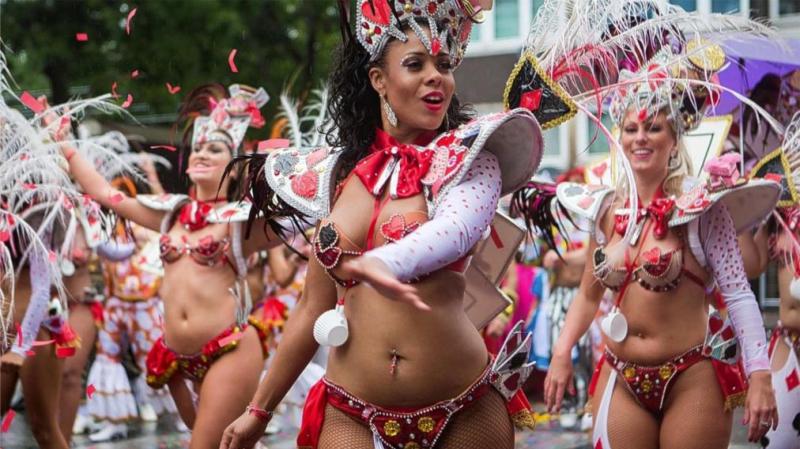European white wedding dress color. Why is the wedding dress white?
Traditional for modern brides is a white wedding dress, although this was not always the case. The fashion for wearing such attire for a wedding ceremony appeared several centuries ago, and the usual image of a girl in a snow-white dress and long veil became popular only in the last century. The choice of white wedding attire is determined by the beliefs associated with this color, the customs of the countries in which they first began to wear a light wedding dress. Why is the traditional wedding dress white? What's its story?
Two main versions - why the bride’s dress is white
Over the centuries of human existence, the white bride's dress has periodically appeared and disappeared. This phenomenon, as a rule, concerned only one country or region, but did not extend to the whole world. Nowadays one can observe the widespread use of snow-white wedding attire, even in those countries where their own wedding culture has been formed for thousands of years. For example, in China, according to custom, the bride's dress is red, but many girls began to abandon this color, preferring white, leaving only a few scarlet details.

How did it happen that the white color, which had not been particularly popular for millennia, spread throughout the whole world, affecting even its most remote corners? This happened in the 17th-19th centuries, the exact date is unknown, but there are two versions of the emergence of fashion for a snow-white dress. Both of them refer to European queens who walked down the aisle in a white wedding dress.
First version
This story is connected with Anne of Austria, a Spanish princess who married the French King Louis in 1615. At the wedding, the girl appeared in a snow-white look, which surprised and amazed those present so much that French ladies began to imitate her style. According to some sources, French women thought it looked like a “cake.” It looked so cute that in France the white dress began to be used everywhere, and then the tradition spread to other European countries - Spain, England, Portugal.

Second version
News of the wedding of the reigning Queen Victoria quickly spread throughout England, and in 1840 a marriage was concluded between her and Albert of Saxe-Coburg-Gotha. The young bride wanted to look new and gorgeous, and therefore decided not to wear the heavy silver brocade, traditional for the royal family, choosing a new color for everyone - white - for her own wedding. Her clothes were made of thick satin, and to decorate the sleeves, veil, and neckline (the so-called lace “berta”), about half a meter of material was used, which the lacemakers from the village of Bir, led by Jane Bidney, made for six months.
After Queen Victoria's wedding, all samples of lace were destroyed so that no one else could repeat the exquisite pattern on her dress, and the outfit itself is stored on the territory of Kensington Palace, where exhibitions are held. Victoria's only decoration during the wedding was a sapphire brooch, given by Albert. It subsequently became a family heirloom and is inherited by members of the royal family. The young queen’s attire so impressed those present that a white dress became traditional for weddings in England, and then throughout the world.

Attitude to the color of a wedding dress at different times
The first mentions of white wedding dresses appear in Ancient Greece. The girls wore a white outfit for the wedding - peplos, the only decoration of which was two clasps on the bride's shoulders. The more elaborate and richer these clasps were, the better the welfare of their owner was considered. To ensure a happy marriage for a girl, she was covered with a long golden cloth. In Ancient Rome, ordinary tight-fitting clothes - calasiris - were worn for the ceremony, and the bride was distinguished by the number and wealth of accessories: tiaras, bracelets, necklaces, rings.
The wedding dress of the bride of Ancient Rus' was strongly influenced by paganism. As a rule, girls wore a bright red sundress. The scarlet hue symbolized protection from evil spirits, fire, joy. There was another image: sometimes girls wore a shirt decorated with elegant embroidery and a ponyova decorated with a red and blue check (a woolen skirt made of pieces of fabric, the hem of which was lavishly decorated). As soon as the newlywed put on this ancient version of the skirt, she was considered betrothed. The tradition of wearing red for a wedding continued until the eighteenth century.

In the Middle Ages
In the Middle Ages in Europe, wedding clothes were not sewn in any specific color. A girl getting married preferred to wear her best dress, the richest and most elaborate. As a rule, the bride’s outfit was not new, but what was worn on holidays. It has been customary since the fifteenth century for wealthy families to purchase separate clothes for their wedding day - the style of the garment and its decor were prepared according to the latest fashion. The dress was lavishly decorated with furs, expensive fabrics, and other decorations, and after the wedding it was worn more than once.
The color of the outfit could be any; as a rule, girls preferred dark or bright colors - purple, green, brown, pink, black. Medieval brides approached tailoring from a practical point of view. Then the streets of the city were dusty and dirty, and therefore clothes of cream, sand, and even more so white would simply get dirty. Washing such a dress was expensive. Differences in wedding images appeared depending on the region or country where the future spouse lived, the welfare of her family, and social status.

In the 16th and 17th centuries
At that time, only one category of girls wore a white dress - the “Brides of Christ”, who went to the monastery and completely devoted themselves to serving God. Dark colors faded into the background in the 16th and 17th centuries, giving way to more pleasant pastel shades, which brides sometimes still wear - light blue or pink. The choice of a certain tone of wedding attire was largely associated with the beliefs and customs of different cultures, for example:
- In France, brides often wore purple jewelry, because it promised them a loving husband for the rest of their lives.
- In Ireland, girls, as a rule, wore green attire on their wedding day. It was believed that this color brings happiness, harmony to the home, and good luck.
- In Rus', brides still preferred to wear dresses with a predominance of scarlet or orange - this is associated with the religion of paganism, the worship of fire.

In the era of neoclassicism
The turning point in the history of the white dress was the era of neoclassicism. Then the tradition arose of wearing light ivory-colored clothes, cream-colored jewelry and snow-white robes. This is due to archaeological excavations that were carried out at that time in Pompeii and Herculaneum. Examples of Roman art were found - sculptures made of delicate white marble, which became public knowledge. This led to the widespread use of marble shade. Clothes of this color were worn on weekdays and during holidays or weddings.
During neoclassicism, not only the traditional colors of wedding dresses changed, but also their style. Girls began to more often abandon tight corsets and fluffy skirts, preferring light, airy decorations with flowing fabrics, delicate ruffled sleeves and high waists. This era made garments in pearly, light shades popular, which logically led to the appearance of the traditional snow-white dress.

What does a white wedding dress mean?
Today's symbolism of the white color of the dress is an endless holiday, a celebration of life, beauty and love. This outfit indicates that the bride is pure, has innocence and purity. He personifies her lightness, tenderness, kindness. It is precisely because of this symbolism that it is customary to get married wearing a white dress. The snow-white shade speaks of perfection, completeness, it means a finally made decision, the beginning of a new life.
Conduct a small experiment: ask family members, neighbors, friends, colleagues what the white wedding dress and white veil of the bride symbolize. I am sure that in the vast majority of cases you will hear: “This is the color of purity, innocence, purity, chastity.” But this is not at all true!
Since ancient times, among all peoples, white symbolized the Past; it was the color of memory and oblivion, renunciation from the earthly world. That is why among the ancient peoples of the Earth, including the Slavs, white was (and for some it still remains) the color of mourning, death, dying. This, by the way, has passed into the Christian tradition - angels and canonized saints are depicted in white robes, which demonstrate not their purity, but their belonging to another world.
So why, according to Russian (and any other Slavic) wedding tradition, was the bride dressed in mourning colors? To understand this, we must remember what genus meant to ancient man. For ancient man, clan (family) meant literally everything: outside the clan, a person had neither rights nor responsibilities; he was not perceived by his fellow tribesmen as an individual, but only as a member of a certain family. And the ancient man himself did not feel like an individual, but exclusively a member of a clan, constantly feeling its powerful support. A girl, becoming a wife, left her clan, “left” it. She “died” for her kind and was “born” again in another. Hence the dressing in mourning, white, clothes.
Associated with these beliefs are the traditions of the bride crying and crying (voices) for the bride. Well, now you can say for yourself why they “voted” for the bride. But why did the bride herself simply have to cry bitterly and a lot? The point here is not at all that the girl was afraid of the unknown, afraid of how she would be received in her new family. The fact is that, leaving her clan and joining someone else’s, she abandoned her patron spirits and placed herself under the protection of her husband’s clan spirits.
With her tears, she seemed to thank her former patrons and apologize to them for the “betrayal”, for the “offense” that she caused them by abandoning them. We all know this picture: the bride, waiting for the groom to arrive, sits, festively dressed, with her bridesmaids in her room. But it wasn't always like this. Among the ancient Slavs, and later, in many Russian, Ukrainian, and Belarusian villages until the 19th century, the bride, during the arrival of the wedding train, sat on the stove in her everyday clothes and mourned her previous life in the family. She changed into a wedding dress only after the groom arrived. And the ancient meaning of this action is farewell to the hearth, family, and ancestral spirits.
The tradition of covering the girl’s head with a veil is also associated with the “dying” of the bride in her family. I now mean not the transparent cape made of lace or tulle that we are all accustomed to, but an opaque shawl (two uncut scarves) made of dense white or red fabric, which was used to cover the bride in Ancient Rus', making her face completely invisible to others . By the way, if I already mentioned the red veil, then I must also say that the mourning color in ancient times was not only white, but also red, or rather, white-red. Remember the images of a folk wedding dress: after all, it was not pure white, but with red elements. The veil, as I already said, was either white or red (lovers of Indian films, a quick question for you: what color are the clothes of modern Indian brides?).
So why was the bride’s face covered with an opaque thick fabric? Yes, all for the same reason: having agreed to marriage, she “died” for her family and has not yet been “reborn” for another, and, according to the beliefs of the ancient Slavs, it was forbidden for the inhabitants of one world to come into contact (even with a glance) with the inhabitants of another world. Why? Because, as our ancestors believed, any contact of our world with the world of the dead led to innumerable misfortunes and even the death of the world of the living. That’s why it was impossible for anyone to see the bride, so as not to bring misfortune to her, her relatives, or themselves.
Over time, the ancient, original meaning of these wedding traditions, like many other folk wedding traditions and rituals, changed somewhat or was completely lost. The meaning of some has been transformed so much that we perceive them as fun or a game at a wedding celebration. But if someone really wants to find out where in Russia the custom of breaking a plate at a wedding or honking loudly from a car when the newlyweds return from the registry office comes from, why the bride is carried into the room through the threshold, and so on, so on, so on, then it’s enough to simply ask the question. For example... why is the bride's wedding dress white.
The history of the wedding dress goes back to antiquity, but the traditional white dress with a veil appeared relatively recently - in the 19th century. How did the history of the wedding dress develop in Russia and why is it still white?
The history of the wedding dress goes back several hundred years. The bride's festive clothes changed every now and then, following fashion; in addition, this outfit was not always white. What was the history of the white wedding dress?
Before a white dress with a long veil became a traditional outfit for brides in most countries of the world, it was by no means a short journey, but since ancient times it has been a special outfit for every girl.

The very first wedding dresses were not even dresses at all: in the ancient world, dresses for such a celebration were made from grass and flowers and decorated with pearls or beautiful shells. In Ancient Greece, young brides were dressed in peplos - the most common women's clothing made of light sleeveless fabric, decorated with two clasps on the shoulders, and the richer the bride's family, the more elegant these clasps were. The bride's head was covered with gold cloth, which symbolized sunny joy, wealth and happiness.
Since in Ancient Egypt, everyday women's clothing was a kind of sundress that tightly fitted the body (it was called kalaziris), they got married in it. In those days, the bride was distinguished from other women not by her clothes, but by the jewelry that could be seen on her in abundance - all kinds of talismans, amulets, bracelets, tiaras, etc.

In ancient Rus', brides wore either a red sundress or a traditional white shirt, decorated with embroidery, with a poneov, a kind of predecessor to the skirt (the choice of outfit depended on the region). Sometimes an apron was also worn over the poneova. Since it was believed that it was the red color that protected from evil spirits, everything on the bride - ribbons, embroidery, trimmings - was only red. This outfit lasted until the 18th century: it was then, thanks to the reforms of Peter I, that Russia began to adopt European fashion. In villages and poor families, brides were dressed in the traditional way in the 19th and even at the beginning of the 20th century, although in general, starting from the 18th century, the history of wedding dresses in Russia kept pace with the wedding fashion of European countries.
As for Western medieval wedding clothing, brides' dresses were ordinary festive clothing, in accordance with the fashion of the time. The tradition of wearing a new dress to a wedding appeared only in the 15th century. In rich families, wedding dresses were supposed to demonstrate the social status of the bride, so they were sewn in the latest fashion from exclusive fabrics and trimmed with expensive furs. The color of the dress could be absolutely any; scarlet, red or purple were especially popular, although wedding dresses were made in dark green, pink, brown, and even black. The choice of color was mainly due to practical considerations: medieval streets were very dusty and dirty, and washing in those days was not a cheap pleasure. And wedding dresses then, unlike today, were not a “one day” outfit; after the wedding, brides wore them several more times and for other special events.

The fashion for plain formal dresses appeared at the end of the 15th century, thanks to the so-called “white balls,” which were very popular in France.
During the Baroque era, wedding dresses began to be richly decorated with lace - this tradition is still present in wedding fashion. Since at that time plumpness was admired, this could not but affect wedding dresses: they became voluminous, with many skirts and puffy sleeves.
At the beginning of the 17th century, brides chose more romantic colors for their wedding dresses. Pink and coral shades are especially popular, and in addition to lace, dresses began to be decorated with freza collars.
Since Medici collars came into fashion in the 18th century, not a single wedding dress could do without this attribute. As for the color scheme, pastel colors became the most popular. Wedding dresses are still richly decorated with lace, plus gold embroidery is becoming fashionable. Commoner girls, guided primarily by practicality considerations, choose brown, gray or beige colors for wedding dresses.
With the Rococo era, the history of the wedding dress changes again: brides are pulled into incredibly narrow corsets, and the skirts of such dresses reach the apogee of their fullness, thanks to a special design called pannier, which ensured wide sides, almost parallel to the floor. In addition, the wedding dress has a flute, and the higher the social status of the bride, the longer it is. As for the color of the outfit, the most relevant are silver and pearl shades.
The era of neoclassicism brought fashion for very light, although not yet white, wedding dresses. At this time, excavations of the city of Pompeii were taking place and European women were treated to ancient sculptures and frescoes, in which they saw ancient fashionistas in loose-fitting dresses. Corsets and full skirts are becoming a thing of the past; now brides are more likely to resemble ancient Romans: high waists, small sleeves and draperies made of light fabrics.
The date of “birth” of the traditional white wedding dress is considered to be February 10, 1940: it was then that Queen Victoria’s wedding to Duke Albert took place in England. At the wedding ceremony, the bride appeared in a sparkling white dress with a long train (12 daughters of English lords were invited to carry it). The official photograph of the royals in their wedding dresses was published and was very popular, and brides, imitating the Queen, began to choose white for their wedding dresses, which became the highest expression of fashion, style and chic. The industrial revolution that took place at that time came in handy - thanks to department stores opening everywhere, every girl had the opportunity to become a fashionable bride in white. Thus began the story of the white wedding dress.
The time before the outbreak of World War I is often called the “Belle Epoque” (Le Belle Epoque). The “modern” style dominates in fashion; brides are returning to corsets, which create a clear silhouette with a slightly elongated waist, while skirts look like a flower lowered downwards. The bride's dress can be compared to the curved stem of a lily, a favorite symbol of modernists.
In the war and post-war 40s of the XX century, naturally, there was no time for wedding dresses; people got married without any outfits at all, but in the 50s, when the shortage of fabrics disappeared into oblivion, brides were seized by a lace madness, although the dresses themselves were the embodiment of the very modesty.
The idea that a bride should look like a princess in a white dress was finally established in 1956, when the “wedding of the century” was broadcast on television: the marriage of actress Grace Kelly to Prince Rainier III of Monaco. The bride's unique outfit was made of white silk taffeta and antique rose lace.
The wedding fashion industry has been developing at a breakneck pace since then, and the so-called “Wedding Fashion Week” is held annually in different countries. The most famous of them is held as part of Couture Fashion Week in New York.
Nata Karlin
Every girl from a very early age imagines herself as a beautiful princess in a charming ball gown.
Beliefs, myths and truth about a white wedding dress
There are many versions as to why a wedding dress should be white. Any of them is more or less similar to the truth, so it is quite possible to proceed from these stories when choosing a wedding dress. It just so happened that In most nationalities, a girl gets married in a white dress.

Today there are some deviations from this standard, for example, an outfit in ivory, beige, red, pistachio, blue or soft lilac will not surprise anyone, but the snow-white dress of the bride was, is and will remain traditional.
The modern world of man is based on events, beliefs and legends of the past
To believe or not to believe in them is the decision of each person. Several well-known versions tell of why should a wedding dress be white?:
- The most reliable of them says that a white wedding dress Queen Anne of Austria was the first to wear it at her wedding. I. She looked so gorgeous in this wedding dress that all French fashionistas began vying to sew snow-white wedding dresses for themselves and their daughters. Subsequently, the first wave of excitement subsided and stirred the hearts of the ladies at the wedding of Queen Victoria of England, who appeared at the ceremony in a snow-white openwork dress with a deep neckline.
- However, the tradition of wearing a white wedding dress to a wedding goes back centuries. In those old days the bride's outfit was a symbol of innocence, purity and humility. In addition, according to legend, the color white protected from the evil eye, damage and bad words.
A classic of the genre, or a traditional white dress for a wedding

So, the wedding! Nowadays, a white dress and a wedding are simply inseparable concepts. As soon as the conversation turns to the wedding ceremony, every person’s memory comes to mind: image of an ethereal beauty in snow-white clothes.
Classic models of wedding dresses are currently considered one of the most popular. This is a universal combination of a tight corset and a luxurious full skirt. It is in this outfit that girls feel like fairy-tale princesses.

The classic dress model looks like this:
- The lower part of the skirt is equipped with hoops, thanks to which volume is created.
- The fabric used for the dress is thick, which can fall in large folds.
- The skirt has several petticoats, sewn from lining fabric or starched tulle.

Classic options also include traditional wedding dresses, which have the following distinctive features:
- A-silhouette, where the skirt widens from the waist and falls in tails all the way to the floor.
- The waist for this style is strictly defined, usually emphasized by a wide yoke or belt.
- This option can be decorated with a long train that is attached to the waist (it can be unfastened if necessary). A loop is sewn to the very tip of the train, which the girl puts on her wrist while dancing or moving along the street.
- Tight corset It is carried out according to all the rules, it has a rigid frame and is laced or fastened at the back.
- The top of the dress can be either open or closed, depending on the wishes of the bride herself.
- The same goes for the sleeves. They can be long, short, 3⁄4 or completely absent.

The bride chooses shoes to match her white wedding dress depending on her own preferences. These could be:
- Traditional white shoes, ankle boots or boots with heels of any shape or without it at all.
- Shoes can be classic style without decorations or decorated with rhinestones, beads and other accessories.
- The color of the shoes is matched to the belt, the bride’s bouquet, or traditionally white.

Wedding dress options
Don’t let a white dress seem like an exclusively classic or even boring option to you, because there are many styles and variations. Let's look at the most popular ones.
The dream of most girls is a luxurious and lush white wedding dress, as in the photo:

This model has a wide skirt and corset. The main features of the outfit are as follows:
- The width and volume of the skirt directly depends on the number of hoops or petticoats. Very often this design has quite a serious weight, but this fact has never stopped any girl if she decided to look like a queen at her own wedding.
- Typically, these models have a strict corset with a minimum of jewelry. The whole emphasis is on the skirt.
A delightful, airy and openwork lace white wedding dress has recently become the most popular among brides
It will look sophisticated and elegant at any celebration. Openwork fabric creates a magical, airy image.

When choosing this option, it is worth considering some nuances:
- If you decorate a white lace dress with a train made of the same fabric, it will look elegant and expensive.
- Shimmering openwork fabric, decorated with small rhinestones, pearls or sparkles will look royally magnificent.
- In itself, a wedding dress made of this material is absolutely self-sufficient, so you should not overload it with additional accessories.

Young ladies with beautiful slender legs prefer short wedding dresses. It should be noted that traditions do not prohibit wearing a short outfit to a wedding, only on the condition that the bride herself likes this image.

Models that have some characteristic features look impressive:
- Typically a short white wedding dress reminiscent of a classic cocktail outfit.
- To ensure the correct placement of accents, designers use only luxurious fabric in creating models.
- In such versions of dresses usually do not use too tight a corset.
- Sleeves can be of different lengths: long, T-shirt, lanterns, 3⁄4, sleeveless at all.
- They look great when complemented with a stylish bolero, stole, or cape.

Designer white wedding dresses
Fashion does not stand still, and modern designers have come up with many options for stylish and amazingly beautiful white wedding dresses, which are rightfully considered exclusive.
The research of fashion designers has gone so far that it is sometimes possible to guess that this dress is intended specifically for a wedding celebration only by the white color and the veil that comes with the set.

The most fashionable white wedding dresses have some features:
- Designers make the bottom of the models asymmetrical. For example, the hem of a dress is much longer in the back than in the front.
- Currently White wedding dresses in retro style are coming into fashion, the style of the 20s of the last century is especially relevant.
- They can be decorated with various large accessories that are not traditionally used in standard wedding dresses.

White wedding dresses with colored elements
The most daring and bright girls will prefer a white and red wedding dress. These are exactly the ladies who can afford to experiment with colors even at such a crucial moment. It is believed that a combination of white and red in a formal dress is an application for leadership in a couple.

The white and red version of the wedding dress can have a number of details:
- Both the main details of the dress and the trim can be red: bodice design, belt, sewn elements.
- If the red background of the model is decorated with rhinestones, the shimmering effect will be simply stunning.
A white and black wedding dress looks especially solemn and elegant. Only a confident and self-sufficient girl can use the classic clash of colors in a wedding dress. A wedding dress looks ideal if the skirt is made of heavy white satin and the bodice is decorated with openwork black lace. You can create a mysterious and mysterious image by placing white lace flowers along the hem of a white dress.

Simple white dress for wedding
Do not forget that it has been and will be in fashion throughout the centuries. classic simplicity of outfit. This is especially true for wedding dresses. A simple, sophisticated white wedding dress will look great on any body type. These models use a minimal amount of decor; the fabric used for sewing is expensive, but creates a feeling of light simplicity.
The most spectacular decoration of this model is the youth and beauty of the bride.

But this does not mean that even such young girls should not decorate themselves on this important day with jewelry as beautiful as themselves. The good thing about the white color of the dress is that you can match it with jewelry of any color. If you want to keep the white color scheme and a classic look, choose gold and diamonds or cubic zirconia.


How to choose a shade of white for a wedding dress?
It is advisable to select the shade of white depending on the girl’s skin color type:
- For the “spring” color type, it is advisable to choose white wedding dresses closer to the shade of ivory.
- Girls with an “autumn” color type and red hair should choose outfits with a cream tint or the color of clotted cream.

- Dark-haired, white-faced beauties “Winter” color type can choose white dresses with a bluish tint.

- For dark-skinned women with brown or black hair of the “summer” color type, it is advisable to choose creamy, delicate shades.
Conclusion
White wedding dresses are undoubtedly a classic of the genre. But lately, themed weddings are increasingly being played, for which girls choose other colors. For example, for a wedding in a nautical style - blue, in a Russian folk style - red, yellow. There are a lot of options for colors and styles today., you just need to imagine. However, whether it is worth deviating from traditions is up to you to decide.
December 2, 2017, 11:18 pm
A wedding dress in which the bride shines always attracts everyone's attention. From a young age, girls dream of how they will look at their wedding, and throughout their growing years they perfect this image in their imagination. A large number of brides assume that the white color of a wedding dress became generally accepted in the distant past, but this tradition was formed only a couple of centuries ago. The history of the wedding dress, which is of keen interest to many, will be covered in the sections of this article.
The color of the bride's dress in ancient times
Brides began to wear white dresses for the first time in Ancient Greece. They were called "peplos" and had clasps on the shoulders, by the appearance of which their wealth was judged. To ensure that a girl’s marriage was filled with happiness, she was covered with a long piece of golden-colored fabric.
Brides in Ancient Rome wore an unremarkable outfit that fitted the body to the wedding ceremony, complementing it with a large amount of luxurious jewelry.
The history of the wedding dress in Rus' says that in ancient times pagan traditions dominated in our country. Typically, the fair sex wore red sundresses, the bright color of which was a symbol of protection from evil spirits. Another image of the bride was also common: the betrothed girls wore shirts decorated with embroidery, a red-and-blue checkered skirt with a magnificently decorated hem. The tradition of wearing red outfits to a wedding ceremony persisted in Rus' until the 18th century.
Wedding fashion in the Middle Ages
During the Middle Ages, European brides did not prefer a specific dress color. They wore their best festive outfits, which were richly ornate, to wedding ceremonies. The history of the wedding dress shows that young ladies living in Europe began buying outfits specifically for marriage in the 15th century. Traditionally, during this time period, brides from wealthy families wore luxurious dresses decorated with furs, jewelry, and expensive fabrics to their wedding ceremonies.
Girls in the Middle Ages preferred to choose dresses in dark or bright colors. They approached the choice of the shade of a wedding dress (the history of the wedding dress is proof of this fact) from a practical point of view. The city streets in those days were dusty and dirty, so light-colored dresses, and especially white ones, could easily get dirty.

XVI-XVII centuries
During this time period, white dresses were worn only by female representatives who went to the monastery and completely devoted their lives to serving God. Dark colors gave way to pastel blues and pinks in the 16th and 17th centuries. The nuances of the history of the wedding dress over the course of two centuries had a direct relationship with the customs of different cultures:
- In France, girls very often chose purple dresses for marriage, promising them a loving spouse for life.
- Irish brides preferred to get married in green robes. According to popular belief, this color attracts happiness and good luck to the house.
When did white wedding attire become traditional?
As the history of the white wedding dress goes, until 1840 the tradition of wearing a white dress to a wedding ceremony did not exist. Brides, as a rule, wore new beautiful dresses, made in the latest fashion. A revolution in wedding fashion was made by Queen Victoria of England, who showed those around her a magnificent snow-white satin dress to those around her at her wedding. Experienced craftswomen worked for six months on the lace ribbon that adorned the neckline of the Queen’s outfit. After Victoria's wedding, samples of exquisite lace were destroyed so that no one could recreate their unique pattern.

To decorate her attire, Victoria used only a sapphire brooch, given to her by her groom. The appearance of the young queen so delighted everyone around her that the white wedding dress became traditional not only in England, but throughout the world. In Russia (the history of the wedding dress confirms this fact), brides began to wear such dresses only in the 19th century.
Stages of evolution of wedding fashion
In the late Middle Ages, the bride's elegant and sophisticated attire was distinguished by a narrow cut, a chic neckline, long sleeves and a train. In the Renaissance, which came to replace it, a wedding dress, usually decorated with pearls and embroidery, was sure to emphasize the splendor of the female representative, falling to the floor in massive folds.
The Rococo era (as the history of the wedding dress goes) added feigned pretentiousness to brides' attire. Dresses with huge multi-layered skirts and a large number of trains, ruffles and bows were considered stylish during this time period. In addition to these outfits, brides often wore massive wigs. Wedding dresses of the Empire era, which had a high waist, were light and airy. They were made from the finest silk and worn with gloves.
An indispensable attribute of wedding dresses was lace.

Wedding dresses of the 20th century
With the advent of the 20th century, wedding fashion began to regain simplicity and become elegant and more restrained. Dramatic changes (the history of the wedding dress serves as proof of this fact) also affected the length of the dress. If at the beginning of the century a dress that slightly exposed the ankles was considered daring, then in the sixties straight and loose wedding dresses with a shirt cut appeared, and over time mini dresses became trendy.
The styles of wedding dresses in the 20th century also underwent many changes. In the 20s, brides entered into legal marriage in dresses of a simple cut with a slightly lowered waist; in the 30s, the image of newlyweds became more feminine; in the 40s, wedding fashion was distinguished by severity and clearly defined lines. In the 50s, the romantic style became fashionable, in the 60s - minimalism, in the 70s - the hippie style with its simplicity and freedom, in the 80s - the sports style. Since the 90s of the 20th century, the white dress, like that of a fairy-tale princess, has confidently gained its position, enveloping the fair sex in an aura of innocence.

Signs associated with a wedding dress
Here are some signs associated with a wedding:
- the groom should not see his fiancée’s dress before the wedding;
- It is forbidden to sell a wedding dress; in order to preserve the marriage, you need to keep it for life;
- A girl should wear her wedding dress only over her head;
- It is not recommended to rent or purchase wedding attire; it must certainly be new, otherwise the fairer sex will be haunted by debts;
- To protect yourself from the evil eye, the bride needs to make several stitches with blue thread on the hem of the dress.
Modern trends
Currently, brides can choose a wedding dress (mystical stories associated with this dress have excited society at all times) of any style and color. The styles and models of wedding dresses are striking in their diversity; the white color of a wedding dress, interpreted as innocent and immaculate, remains traditional.

Nowadays, a girl on the most important day of her life can appear in the image that she cherished in her dreams. She has freedom of choice and a chance to transform into a business lady, a romantic charmer, a princess from the Middle Ages, a Greek goddess. It is not the most important thing which dress the bride chooses, the main thing is that she is the happiest.














